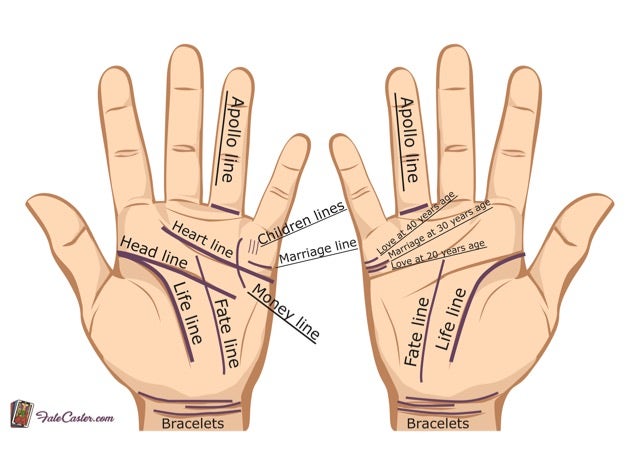Palm Reading Guide: What The Lines On Your Hand Say About Your Personality
Your fate lies in your hands.
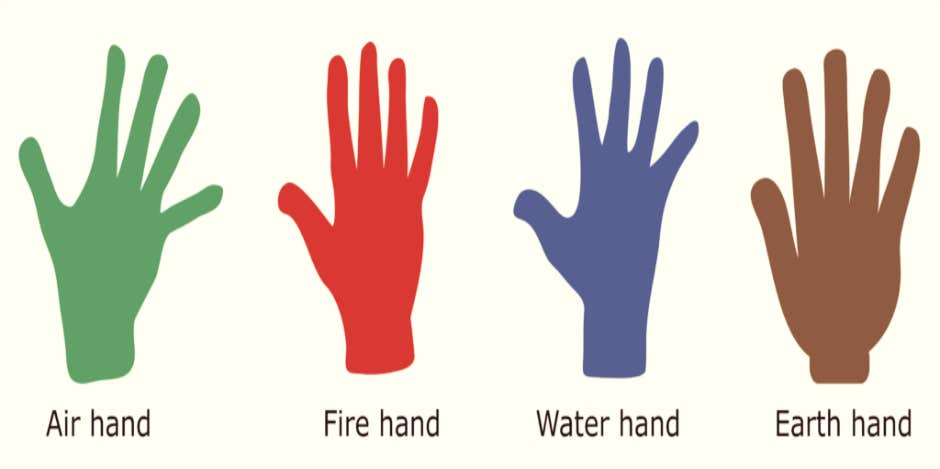 fatecaster
fatecaster Palmistry, also known as chiromancy, has its roots in India, China and areas of ancient Israel, but it’s truly a worldwide art of understanding your life and of telling your fortune. During the Middle Ages and the Renaissance, palmistry was often suppressed as a superstitious practice, but today, I know many people who practice it to successfully understand themselves and others.
Luckily for you, basic palmistry is easy to understand and even easier to begin using. Of course, the more time you put into studying it, the more successful you’ll be in making accurate predictions.
If you want to get started in becoming a chiromancer yourself and learn how to read palms, I have put together this detailed palm reading guide to help you understand the main aspects of this art.
Choosing Which Hand to Read
Most people have two hands; you can’t start palm reading without knowing which hand to examine. I really recommend that you spend some time looking at both hands, but you should begin with the dominant hand.
Theories of the Dominant Hand
There are some palmists who believe that all females should use the right hand as the dominant hand and that all males should refer to the left hand. Another school of thought holds that the left hand shows your potentials while the right hand demonstrates what you’ve been able to accomplish with those potentials.
Still, others insist that your dominant hand is the one that you use to write and to complete most tasks, meaning that it represents your conscious mind, whereas your other hand is more demonstrative of your subconscious mind.
All of these are interesting theories, but I would suggest that you begin learning how to read palms by focusing mostly on the hand that you use predominantly until you’re ready to undertake a more thorough reading.
Understanding Hand Shape
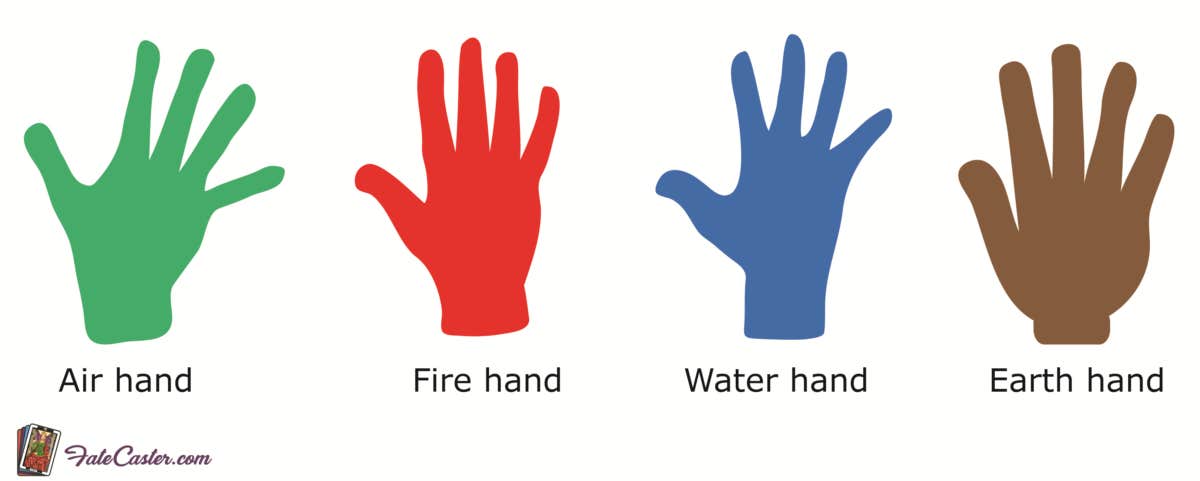
The four elements of chiromancy
There are many different aspects of examining and understanding the hands that go into the act of palm reading. You should start with the shape of your hand before you get into looking at lines and finger shapes.
Most palmists subscribe to four major types of hand shapes that lend themselves to your character traits and temperament. Understanding these most common classifications will help you begin to recognize other types of marks on your hands.
Knowing the type of palm you are examining can also help you recognize the types of lines you see. For example, earth and water hands usually feature fewer lines that are deeper than those on air or fire hands. These generalizations can help you locate information in the palm that you are examining.
The Earth Hand
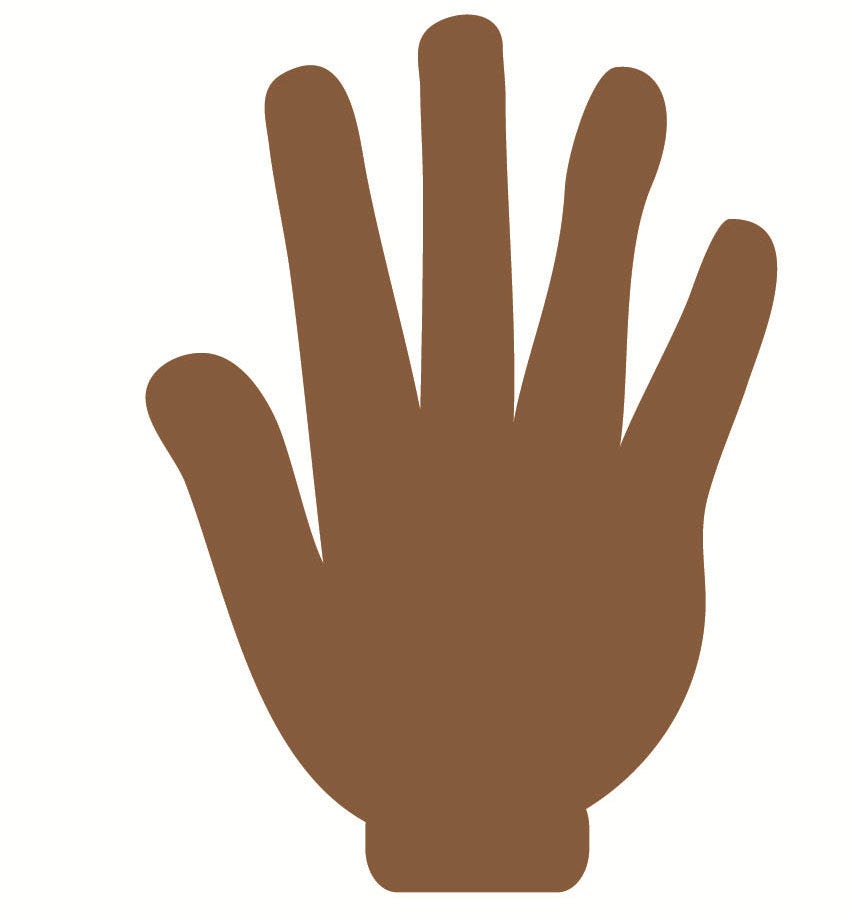
You’ll know an earth hand based on the strongly square shape of the palm and fingers. The palm from the wrist to the bottom of the fingers is approximately the same length as the fingers, and the skin is likely rough and ruddy in color.
People with earth hands tend to be more practical and level-headed, learning from experiments and hands-on experience rather than from reading or from studying a book. As the title would suggest, many earth hands prefer the outdoors to indoors, and they aren’t particularly suited to office cubicles or jobs with a lot of paperwork.
The Air Hand
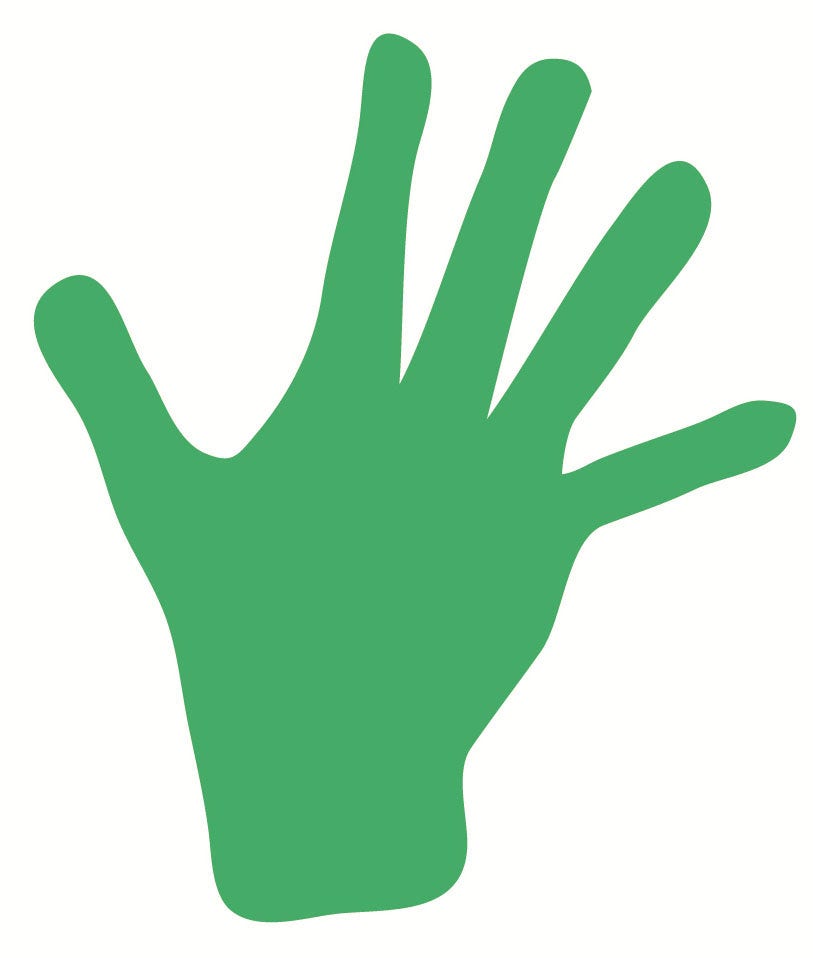
An air hand can also be square, but it is more likely rectangular in shape with long fingers and low-set thumbs. Although the length of the palm from the wrist to the bottom of the fingers is typically equal to the length of the fingers, like the earth hand, those lengths are generally longer overall, more like a rectangle. Air hands often have dry skin and knuckles that protrude.
Unlike earth hands, people with air hands are curious and intellectual, preferring to read and to learn through study. Many of these individuals are worriers who prefer to internalize their feelings and their anxiety. This can make them a bundle of nerves and can cause problems in close relationships despite their impressive communication skills.
The Water Hand

If you’re looking at an oval-shaped palm, it’s most likely a water hand. The widest part of the palm is larger than the length from the wrist to the bottom of the fingers, but it’s also about the length of the fingers. These hands feature long and flexible fingers that come from this ovular base.
Those with water hands are often the most emotional and the most unbalanced. Although air hands are sometimes chided for not being able to handle their anxieties, water hands are even worse. They have trouble dealing with stress, often choosing to listen to their feelings over their logical thoughts. However, people with water hands are motivated by looking for peace, and they are exceptionally artistic.
The Fire Hand
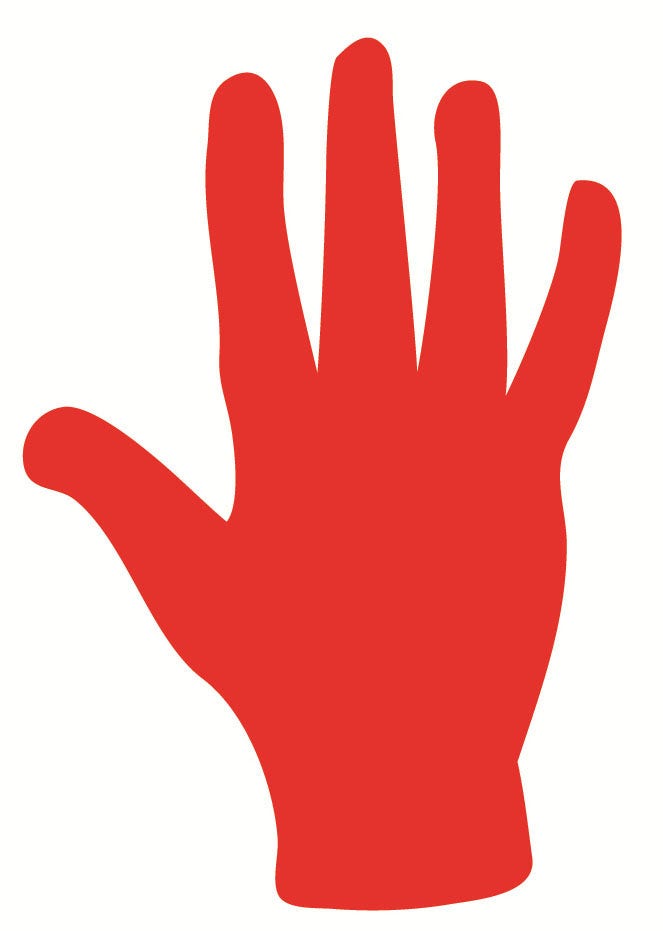
The final type of hand shape is the fire hand. These hands have fingers that are shorter than the square or rectangle created by the palm. Most fire hands are either flushed or pink in skin color.
As their name suggests, people with fire hands are extremely kinetic. They can be short-tempered and impatient, but that is simply because they are great leaders with a clear vision of their plans and their futures. This can make fire hands a little intolerant, but this is a reflection of their unique and individual thoughts, feelings and temperaments.
Examining the Palm Lines
Nearly all hands have a heart, a head and a life line on them somewhere. Some hands include additional lines, but these three, plus the fate line, are the ones that you should examine first.
The Heart Line
Sometimes also referred to as the love line, the heart line runs along the top of the palm just below the knuckles. You can read the heart line from the little finger to the index finger or in the reverse direction. The heart line is believed to demonstrate your romantic perspectives, your cardiac health, and your innate emotional stability.
Most palmists look at this line to get a strong insight into your emotional side to understand how you have acted and how you will continue to act throughout your lifetime.
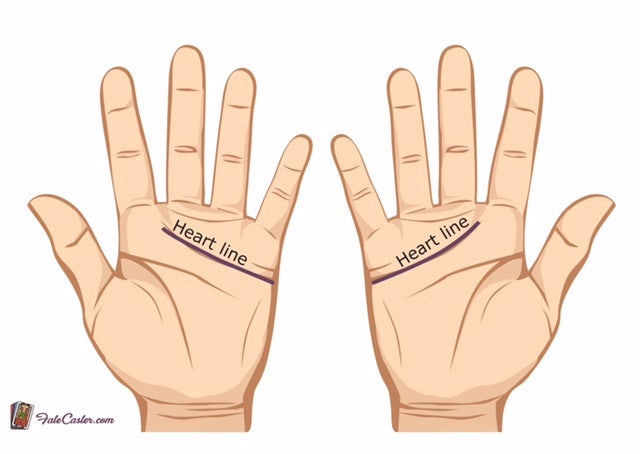
You can determine more specific information with a closer look at the placement and the shape of this all-important line.
- A line that begins below your index finger shows that you’re content with your love life.
- A line that begins below your middle finger tells that you’re selfish in areas of love.
- A line that begins in the middle of your hand means that you fall in love easily.
- A short and straight line indicates that you have less interest in romance than many people.
- A long and curvy line shows that you freely express your thoughts and feelings.
- A line that touches your life line means that your heart is broken easily.
- A line that runs straight and parallel to your head line demonstrates your good control of your emotions, your stability, and your approachable demeanor.
- A line curving upward shows your verbal dexterity and your ability to speak about love and feelings.
- A line curving downward, however, indicates your inability to express your feelings and your weak character.
- A wavy line represents your many relationships but your lack of serious relationships.
- A circle, also called an island, on your line marks sadness or depression in your life.
- If your love line has many circles, making it look like an iron chain, you are sentimental and potentially involved in many emotional entanglements.
- A broken line indicates that you have undergone emotional trauma.
- Smaller lines crossing your heart line demonstrate further emotional trauma.
- A doubled love line shows that you’re especially good at expressing love and that you’re capable of accepting two different relationships at once.
The Head Line
The head line is another of the most important lines you’ll find on a palm. It begins from the edge of the palm between the forefinger and the thumb, and it extends across the palm between the love line and the life line.

The head line is linked to a person’s beliefs, attitudes about life, critical thinking, and creativity. In addition, it affects the memory and the self-control of the person.
Practical individuals typically have a straight head line while more creative and spontaneous people feature a curved line. A thin and deeply cut head line indicates intelligence and strong thinking skills, but there are many other possibilities of length and appearance for this line.
- A short line that only reaches your middle finger indicates that you prefer physical tests and achievements rather than mental tasks, and you’re sometimes careless or hasty in your decisions.
- A long line that extends to under your little finger means that you have a clear mind, you’re considerate toward others and you can easily get lost in your own thoughts.
- A line of medium length, meaning that it reaches your ring finger, is the most common and shows that you’re smart and have great potential.
- A line separated clearly from the life line demonstrates your enthusiasm for life and adventure.
- A wavy line represents your many interests and your short attention span.
- A circle or a cross in the line indicates some sort of emotional crisis affecting your thoughts.
- If you have multiple crosses in your line, you face many important decisions.
- A broken line means that you have many inconsistencies in your thoughts.
- A line that curves steeply downward indicates that you have a very strong imagination and artistic talent, but you’re easily influenced by your emotions.
- If the end of your head line is close to your heart line, you’re good at creating and maintaining personal relationships.
- If your head line and your life line overlap, you’re more thoughtful and introverted.
- If your head line is far apart from your life line, you’re bold, extroverted and highly independent.
- A star on your head line means that you may be hurt or you may suffer from headaches.
- A star near your head line but not on it indicates your great wisdom.
- Few people have a doubled head line, but if you do, you’re exceptionally strong mentally.
The Life Line
The life line begins near the thumb and arcs toward the wrist. This line is responsible for showing the physical health and general well-being of a person, including potentially major life changes.

Despite popular belief, this line has nothing to do with the length of a person’s life. However, the lengths and shapes of this line are very important to its meaning.
- A line that runs close to the thumb indicates that you’re often very tired.
- A line that is strongly curved demonstrates your exceptional energy.
- A line that reaches near your wrist and that is cut deeply into your palm shows your vitality.
- A short and shallow line means that others easily manipulate you.
- A big, long curve in a semicircle shows your strength and enthusiasm for life.
- A straight line that almost reaches the end of your palm demonstrates your caution in relationships.
- Multiple life lines show that you have extra vitality.
- A circle on your life line marks a time when you were injured or hospitalized.
- A break in the line means that you’ve had a sudden change in your lifestyle.
The Fate Line
The final major palm line is the fate line; however, not everyone has one, so this may not be applicable to all of your palm readings. For those who do have a fate line, it shows how much a person’s life is affected by circumstances beyond his or her control.

Fate lines can appear in many forms.
- A deep line means that you’re strongly controlled by fate.
- A line with breaks or sudden changes in direction shows that you’re subject to many life changes.
- A line that begins to join the life line indicates that you’re self-created individual with many dreams.
- A line that begins at the base of the theme and crosses the life line means that you have the support of family and friends.
- A line that is ended at the heart line indicates that your career is affected by your emotions.
Other Important Lines
In addition to the four major lines in palm reading, there are several others that you can study to learn even more about the hand’s owner.
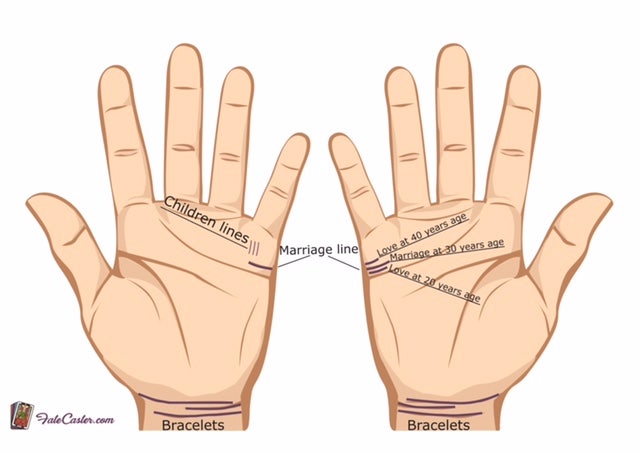
The marriage line is just above the heart line, and it indicates the state of your love relationships and marriage.
The children lines are vertical lines just above your marriage line that indicate your number of children and the lives of those children.
There are money lines located under the base of your little finger that can indicate the amount of wealth you’ll have throughout your life.
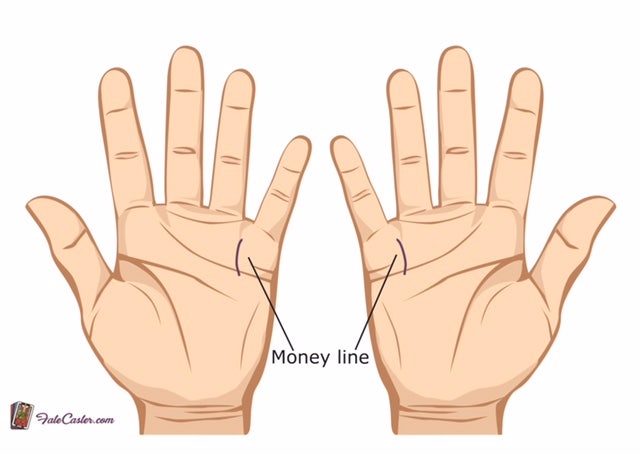
Bracelet lines, located at the base of your wrist, reveal your general health state. If they are solid and unbroken it means that the person in question has a good chance for a long, prosperous and healthy life. If, however, you happen to find more breaks, chains or gaps, it means you could have some problems with your physical wellbeing.
The sun line, also called the Apollo line, indicates your popularity and talents that will affect your future successes.
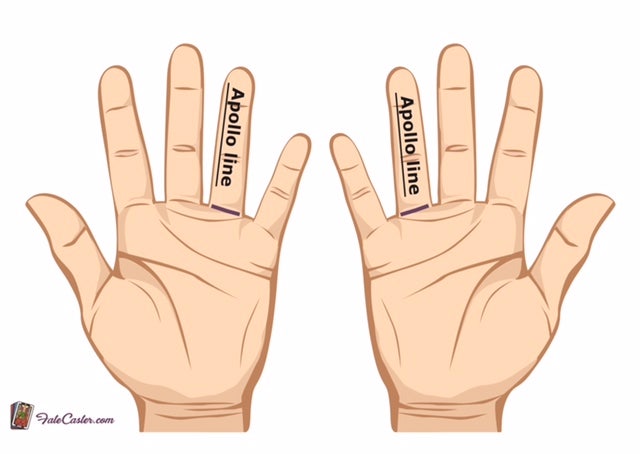
Looking at the Mounts
When I first bring up the idea of looking at the mounts of the hands, many people have no idea what they are until I point directly to the fleshy areas at the base of the fingers. If you cup your hand a little bit, you’ll see the mounts more clearly.
The size of the mounts has some effect on the different aspects of the personality.
Venus mount
If the Venus mount is the largest, that person more likely interested in instant gratification, energy and perhaps even promiscuity. On the other hand, a nearly non-existent mount of this type indicates that he or she has little interest in family issues or even love.

Jupiter mount
A well-developed mount under the index finger indicates a dominant, perhaps aggressive, personality that may veer from ambitious into being self-centered. A missing Jupiter mount typically shows a lack of self-confidence and maybe even dishonesty.

Saturn mount
The Saturn mount is directly under the middle finger. An impressive Saturn mount appears on a stubborn but sincere person who is independent and patient. However, a low mount in this location means an innate disorganization and superficiality that can lead to depression.
Apollo mount
Under the ring finger is the sun mount, also called the Apollo mount. Those with large sun mounts are prideful, quick-tempered and interested in arts and literature, but a missing mount here indicates a lack of imagination.
Mercury mount
The final mount under the little finger is the Mercury mount. A large Mercury mount means the person probably talks too much because he or she is quick-witted and full of energy; a non-existent one means the person is very shy and unwilling to work hard.
Taking the Fingers into Consideration
Of course, no detailed palm reading guide can be complete without a thorough look at the fingers attached to those palms.
Thumb
A thick and solid thumb indicates a person who is very practical with money, who has very simple demands and who keeps his or her promises. However, a flat, thin or uneven thumb demonstrates a more impatient person who makes decisions based on pleasure and excitement.
People with shorter thumbs often need to be self-sufficient to be successful, especially in their younger days, but those with longer thumbs are more confident and have a smoother path to happiness, wealth, and success.
Index finger
A careful examination of the index finger indicates a person’s desire for power. An index finger the same length as the middle finger demonstrates a tough and pushy person who earns a lot of money but doesn’t save it.
Shorter index fingers belong to jealous people who suffer work hardships but who are very approachable personally.
Middle finger
The middle finger is typically the longest of the four fingers, and the longer it is, the more a person will have a favorable life. A short middle finger suggests that a person will be more persistent in work, and an uneven or curvy finger means that the person needs to control his or her emotions. A middle finger that is equal in length to the other fingers indicates a person who is impatient and who often changes jobs.
Ring finger
The ring finger is the home of the wedding band, and it represents love and family ties. A ring finger that leans into the middle finger demonstrates a person who is responsible to the family structure and who pays attention to the spouse and children.
If the ring finger is as long as the middle finger, the person has a love for gambling and taking high financial risks. Shorter ring fingers indicate people who are down-to-earth and more cautious.
Little finger
The little finger, also called the pinkie finger, is representative of children. A very short and bent little finger is a sign of weak children. It also shows honest and straightforward people. Successful people have long little fingers, indicating their strong workability and social connections.
All (lines) in one
You always have your hands by hand, but if you’d ever think you’d need some instant information about the main lines, here’s a huge picture of them. All you need to do is save it on your smartphone and check it whenever your chiromantic ambitions come up.
